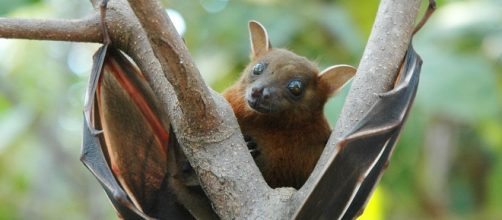People residing near bat colonies commonly witness bats crashing into Windows And Walls. As Bats rely on echolocation for navigation, this should not be the case. In order to find the real cause of this perplexing phenomenon, Scientists conducted careful research and finally concluded an answer.
In an experiment headed by Stefan Greif from the Max Planck Institute for Ornithology in Germany, 21 bats of the Myotis myotis species were put through a flight tunnel to observe their course and collision. Out of these 21 bats, 19 ended up crashing into vertical metal plates at least once; some even clashed multiple times.
The study published in Science on September 7 observed many head-on collisions as well.
Facts about bats
Bats are classified as the second largest order of mammals. They are found in all regions of the world except very cold places. Bats are largely classified into Megabats and Microbats. Most megabats are fruit-eaters. Microbats are insectivores or fish eaters. Only the vampire bats are hematophagous and drink blood. Even though bats have poor eye-sight, they are not completely blind.
Bats rely less on their vision and more on the use of echolocation for navigation. They send out an extremely high amount of Ultrasonic sounds. After observing the sent and echoed version, their system is able to develop a detailed picture of its surroundings.
So the accuracy of the image a bat forms heavily depends on their ability to separate the calls from echoes.
However, smooth surfaces alter this perception a little.
The new fact
Based on their observation from the experiment on bats, researchers concluded that smooth surfaces like man-made windows, walls, and plastic are problematic for bats. Smooth surfaces reflect sound at very different angles than rugged surfaces. As a result, bats might never read the echo returned from these surfaces.
Since these surfaces reflect sound away from bats, they find it hard to read the returning echoes. Often, it seems that they take it as a clear signal to pass through. Sometimes, bats treat smooth surfaces like water.
At times they even take a dive to drink from them resulting in a collision.
So bat collisions into windows and walls are more of our problem than theirs. As smooth surfaces confuse them bats are unable to detect what’s ahead. This is why they often collide with windows and walls. Human beings end up tampering with wildlife and the natural world in so many different ways.


